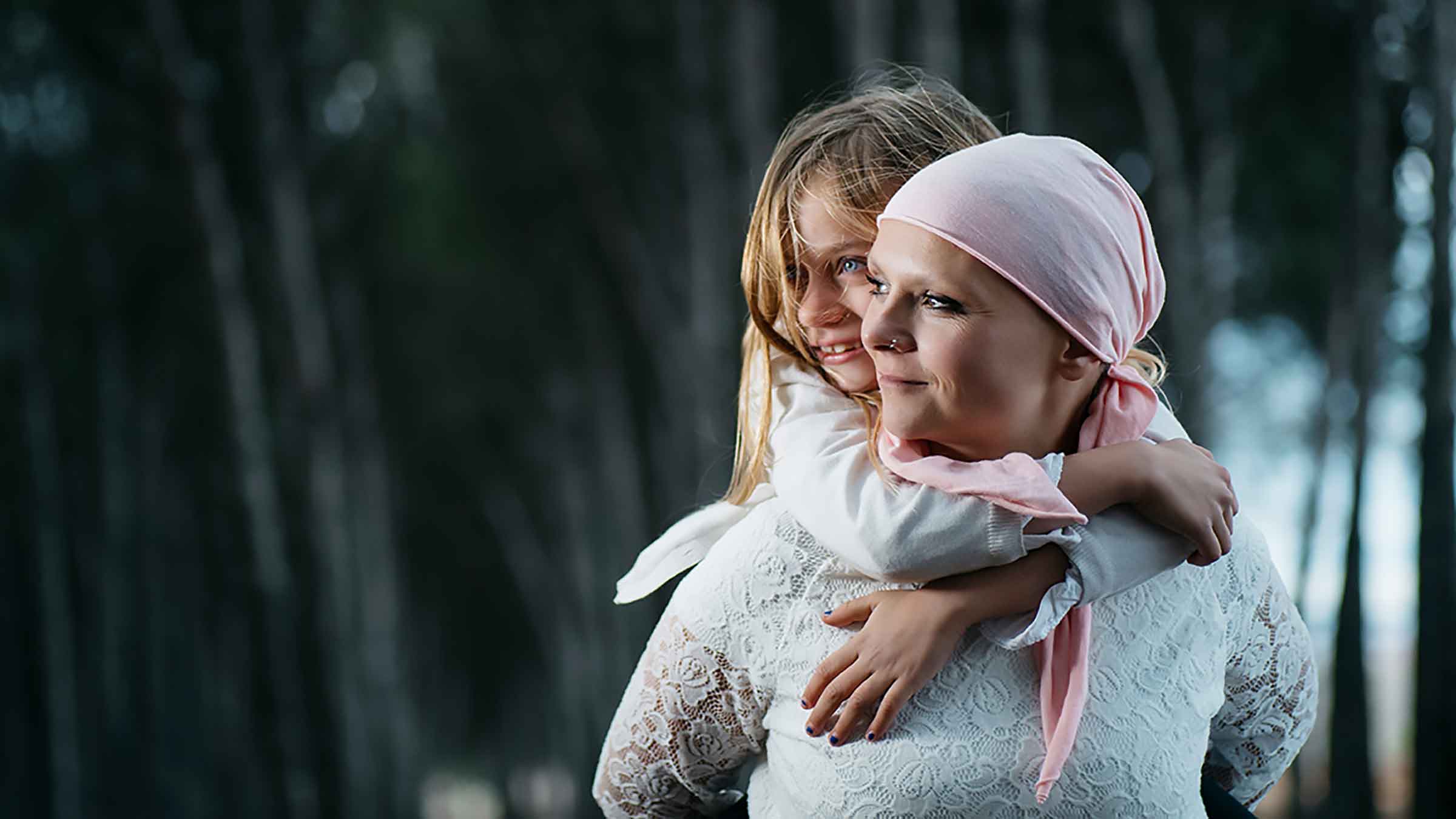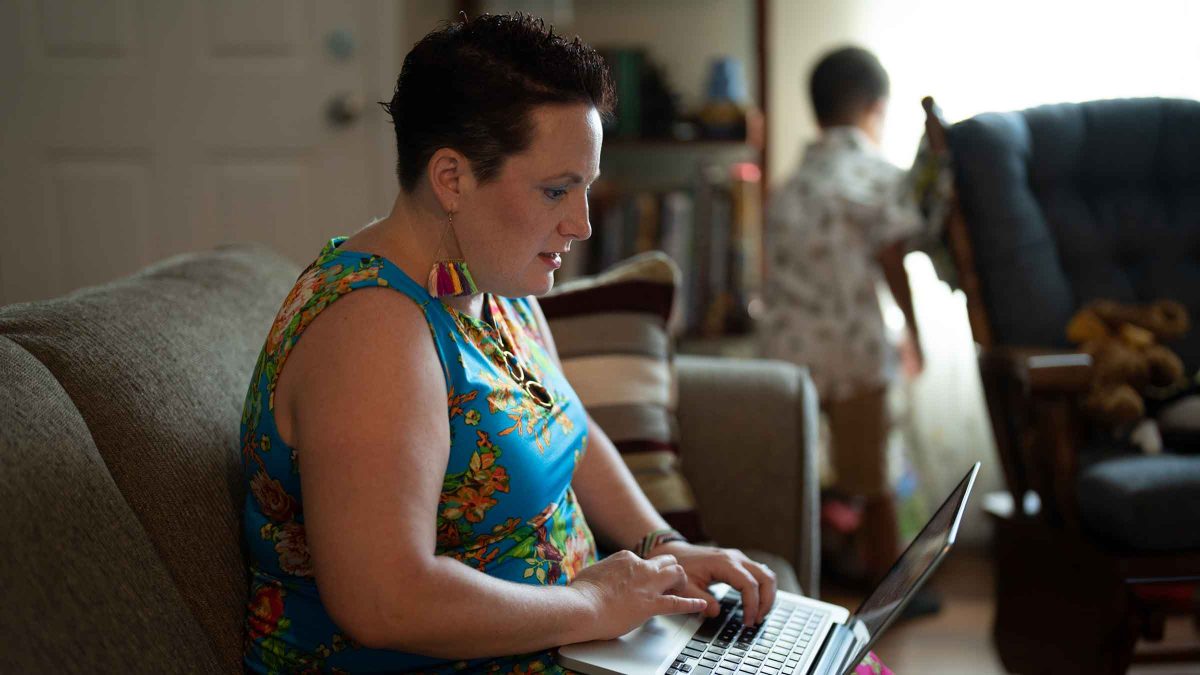The day I was diagnosed with cancer: Real experiences & tips

CaringBridge Staff | 05.09.24
We spoke with cancer survivor and long-time CaringBridge user Stephanie Kennelly to create this article. You can hear her speak about her journey and the work she has done to support the cancer community in Minnesota Oncology’s video. We are thankful that she was willing to share her story with us, along with the countless other CaringBridge users who helped inform this article.
When Steph Kennelly felt a persistent “buzzing” in her ear during the already unsettling times of 2020, she knew something was off. Despite trying to brush it off as stress, the nagging feeling led her to discover a lump in her breast while in the shower.
Her journey started with a deep sense of dread—not from the disease itself, but from the thought of having to share the news with her loved ones. Still, she felt a sense of relief in knowing what was wrong.
Steph’s story resonates with many because it underscores a profound truth: Trusting your instincts about your body is crucial. Remember, while each “The Day I Was Diagnosed with Cancer” story is unique, the shared experiences across stories highlight that you are not alone.
Here, explore common experiences and advice shared by real CaringBridge users who have been on a cancer journey.
Experiencing unexpected emotions
When you’re diagnosed with cancer, emotions can catch you by surprise. Many patients feel significant relief when their diagnosis is confirmed because it means their worries are valid.
However, there can also be feelings of guilt and an overwhelming dread. There can be a sense of anxiety about having to break the news to family. Some people report feeling numb or focused on more practical tasks rather than having feelings they thought they “should” feel.
Emotions can also feel confusing and contradictory, adding to the stress of the situation.
Takeaway: Know these emotions are normal.
It’s important to understand that there’s no right or wrong way to react to a cancer diagnosis. A variety of feelings and even a lack of feeling are all normal reactions. Finding a way to express and process your emotions can also help them feel more manageable.
Not knowing how or when to tell others

Deciding when and how to inform others about a cancer diagnosis is a deeply personal decision.
Steph chose to wait until she had a complete understanding of her condition before telling people outside her immediate family. This approach helped her manage how the information was received, and it reduced the pressure of answering questions she wasn’t yet prepared to address.
You may be concerned with how others will react or how it will impact them. It’s common for patients to be particularly concerned about how their children or grandchildren could react to the news. Balancing these considerations makes the decision a careful, thoughtful process.
Takeaway: Tell others on your own timeline.
You may choose to share your diagnosis immediately, for support, or to wait until you have more information. Both approaches are valid. Handling your diagnosis in waves—starting with those closest to you and gradually widening the circle—can help you manage your privacy.
Like Steph, you may find that preparing yourself emotionally and gathering all necessary information before a broader announcement can help you manage the situation better.
A dedicated space to share updates with everyone at once, CaringBridge makes it easy to activate a support network to come together and help you heal while surrounded by loved ones.
Dreading people’s responses to the diagnosis
One of the hardest parts about sharing a cancer diagnosis can be anticipating and managing the reactions of others. Some people dread hearing words of pity or sorrow. Steph, for example, worried that others’ outpourings of emotion would make her feel compelled to manage their feelings on top of her own.
This added emotional labor can be draining and detract from your needs during a critical time. For some people, retaining control of who would be told and how is a way to preserve emotional energy for the challenges of treatment ahead. It allows them to stay focused on healing rather than comforting others.
Takeaway: Let them know how you’d like them to respond.
Communicate your preferences about how people can support you. If you prefer not to hear “I’m sorry,” be upfront about it. Guide them on what to say or do that would actually help you. This proactive communication helps set a tone that respects your needs and boundaries.
Asking for positive affirmations or for specific actions, like sending a meal or simply listening, can help people tailor their support to be more beneficial and less burdensome. It also relieves your friends and family from the guesswork of how to help, making their support more effective and appreciated. Everyone benefits when they understand the best ways to contribute to your journey.
Difficult emotions during delays between diagnosis and treatment

The wait between diagnosis and treatment can be an incredibly stressful period filled with uncertainty. For Steph, this time was fraught with anxiety as she awaited further tests to determine the extent of her cancer.
This waiting period can intensify feelings of vulnerability and fear about the future. Some people describe it as being stuck in limbo, where each day passes without progress or answers. These delays often amplify the normal fears associated with a cancer diagnosis, making it harder to maintain a sense of control.
Takeaway: Don’t be afraid to voice your concerns with your care team.
During these waiting periods, communicate openly with your medical team about your concerns. Being involved in your care could alleviate some of the anxiety associated with the unknown. Having a trusted family member or friend informed so they can advocate on your behalf when you’re not up to it is also beneficial.
Open communication can lead to adjustments in your treatment plan that better address your emotional and physical needs. This collaborative approach ensures that you’re an active participant in your care rather than feeling sidelined. By voicing your concerns, you build a support system attuned to your unique needs and circumstances.
Receiving well-meaning support that misses the mark
Though well-intended, support from others doesn’t always match what you need. In some cases, the influx of support comes in a form that is unhelpful. Plus, you may feel guilty or stressed when declining offers that don’t meet your needs.
For instance, while friends might send meals, receiving too many at once can be overwhelming rather than helpful. People have also described being burdened with numerous calls and texts with which they feel like they need to respond.
Many people in your support network may also be willing to help but are unsure how. This could lead to you getting many general offers of help but no clarity on what tasks they’re willing to do.
Takeaway: Be specific with what you need from others.
Managing these good intentions is part of effectively navigating your support network. It’s helpful to clearly communicate what assistance is most useful to you.
For example, Steph set up a specific, recurring time where she would accept calls from her support system so that she wouldn’t receive calls and messages at random. Setting specific guidelines—such as accepting help at scheduled times, like Steph did—can ensure that the support you receive is actually helpful and not just well-intentioned.
Tell people the specific things you need. This can be practical help, such as childcare, or quieter forms of support, like company during treatments. You might request someone to assist with grocery shopping or to join you for a walk.
Clarity helps your support network offer practical, timely aid that genuinely benefits your daily life. It also allows your friends and family to feel more confident in their ability to contribute positively to your journey.
Not knowing where to find support

Finding the right support after a cancer diagnosis can be overwhelming. You might not know where to start or even what kind of help is available. In the midst of trying to manage all the emotions and logistics of your diagnosis, it can be difficult to know where to turn for support.
Often, people feel isolated because they don’t know who to ask or what to ask for. This can be particularly hard if you don’t know anyone who has been diagnosed with cancer or who has had other illnesses.
Takeaway: Know there are countless resources.
Beyond personal networks, numerous organizations offer support tailored to cancer patients. Local cancer support groups, online forums, and specialized nonprofits can provide a community that understands your experiences firsthand. Engaging with these can bring practical support, emotional solace, and much-needed connection.
Services range from practical help, like house cleaning from Cleaning for a Reason, to the kind of emotional and community support found at CaringBridge. Many cancer centers offer patient advocacy programs to help you navigate treatment options and connect with other support services.
It’s worth taking the time to explore these options. They can significantly enhance your ability to manage both the practical and emotional aspects of your journey.
What’s your story?
Every cancer journey is personal and unique, and sharing these experiences can be empowering and healing. Whether through platforms like CaringBridge or local support groups, connecting with others who understand can make a significant difference.
What’s your story? Sharing it could not only help you process your journey but also help others feel less alone.